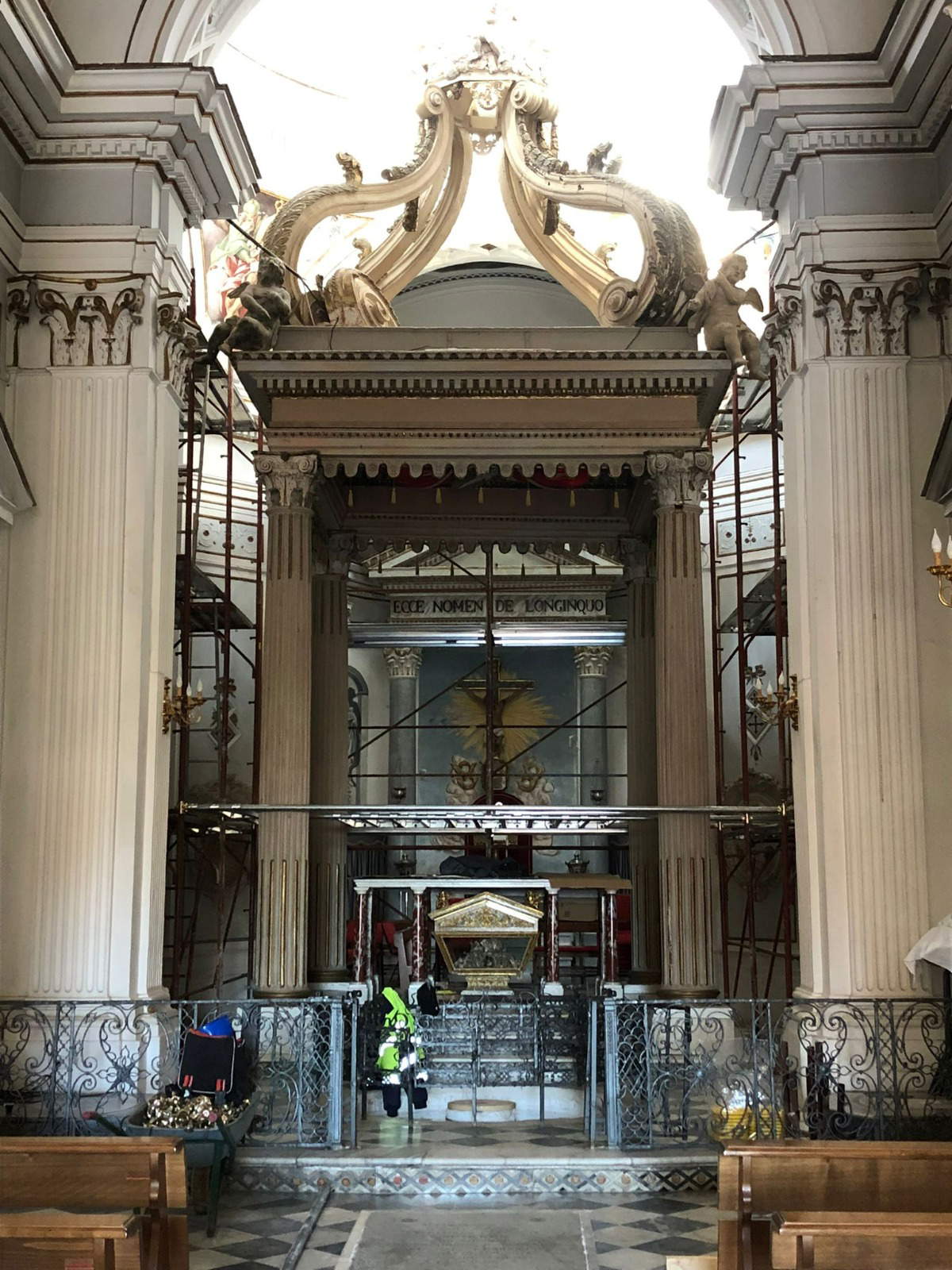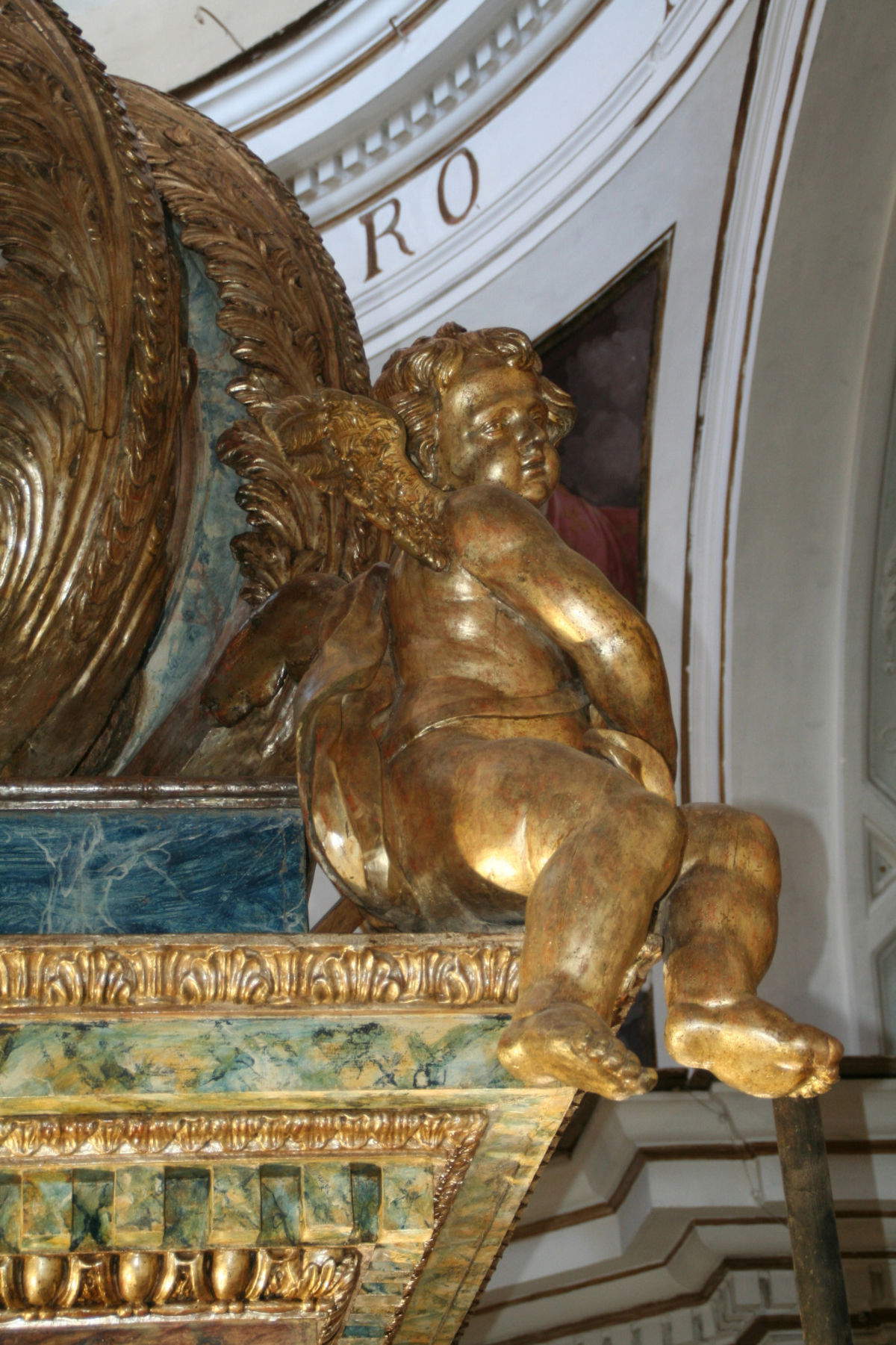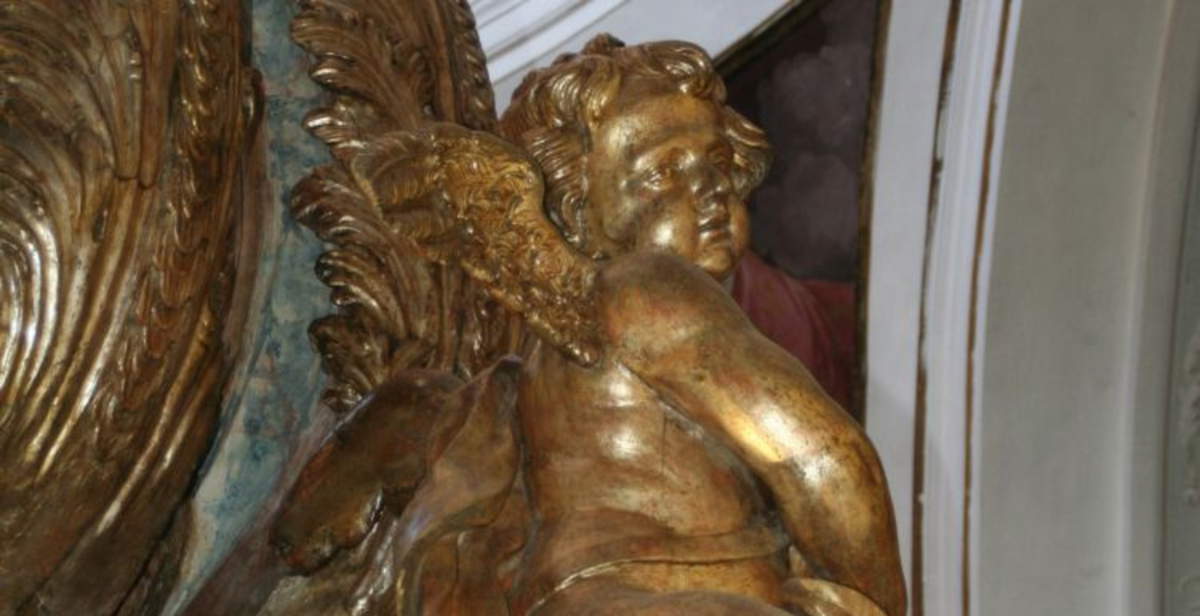Work has been completed on the restoration of the monumental canopy of the Soluntine basilica of Sant’Anna in Santa Flavia, in the province of Palermo. The artifact, an imposing wooden structure built at the end of the 18th century, was the subject of an intervention divided into two lots, financed by the Regional Department of Cultural Heritage and Sicilian Identity for a total amount of more than 132,000 euros. The work was carried out by the Catania-based firm Comes, which specializes in restoration work, based on a project drawn up by the Palermo Superintendency of Cultural Heritage. The first phase involved the structural consolidation of the canopy, made necessary by the serious deteriorating condition of the structure. In particular, the attack of termites and xylophagous insects had compromised the stability of the work, requiring a careful operation of securing and static reinforcement.
“Every time we return an asset to the community,” says the councilor for Cultural Heritage and Sicilian Identity, Francesco Paolo Scarpinato, “we make a gesture that preserves the memory and identity of a place. Interventions like this one not only safeguard valuable works from the wear and tear of time, but also preserve our roots and transmit the culture and identity of our territories to future generations.”


In addition to the preservation of the structure, plastic reintegration of missing parts was carried out. Original decorative elements, detached over time, were reinserted according to criteria of stylistic consistency and philological respect. The main objective of the intervention was to restore the formal legibility and aesthetic value of the property. To this end, a second project was drawn up, again by the Superintendence, aimed at completing the decorative restoration of the canopy. This phase included the removal of the layers of dullness that, over time, had covered the pictorial and gilded surfaces, concealing the original appearance of the artifact. Thanks to the cleaning and color reintegration, the lacquers, faux marble and gilding became visible again, restoring the work to its original ornamental value. The monumental canopy is unique in the local context and represents an important example of Palermo’s artistic craftsmanship of the late 18th century.

Its creation is the result of a collaboration between master woodworker Domenico Di Stefano and decorator Antonio Pellegrino. The two craftsmen worked on a wooden work that, through the use of lacquering and gilding techniques, emulates more noble materials such as marble and gilded bronze with surprising verisimilitude. The architectural design is traditionally attributed to Antonio Interguglielmi, a neoclassical architect active in Palermo in the late 18th and early 19th centuries. Interguglielmi elaborated late Baroque decorative motifs, blending classicist influences with scenographic ornamental solutions. In its structural and decorative articulation, the baldachin in the basilica of Sant’Anna recalls, albeit at a distance, Gian Lorenzo Bernini’s imposing canopy made for St. Peter’s Basilica in the Vatican.

During the first quarter of the 20th century, a later intervention profoundly altered the aesthetic perception of the artifact. The original lacquering and gilding were in fact covered by a thick layer of industrial cementite. The reasons for this modification are not entirely clear: it may have been adopted to hide decorative gaps or to conform the liturgical furnishings to a new aesthetic sensibility marked by greater sobriety. In fact, the result was a flattening of the work, which lost much of its evocative and ornamental capacity. With the recently completed intervention, the canopy now returns to its original configuration, and returns to the community of Santa Flavia and visitors a cultural asset of significant artistic and historical value.
 |
| Monumental canopy of the basilica of Sant'Anna in Santa Flavia in Palermo restored |
Warning: the translation into English of the original Italian article was created using automatic tools. We undertake to review all articles, but we do not guarantee the total absence of inaccuracies in the translation due to the program. You can find the original by clicking on the ITA button. If you find any mistake,please contact us.